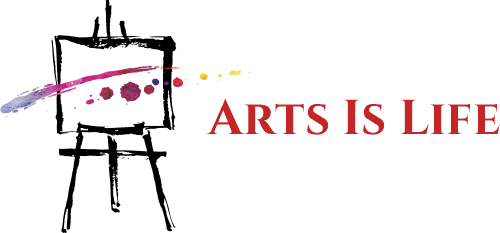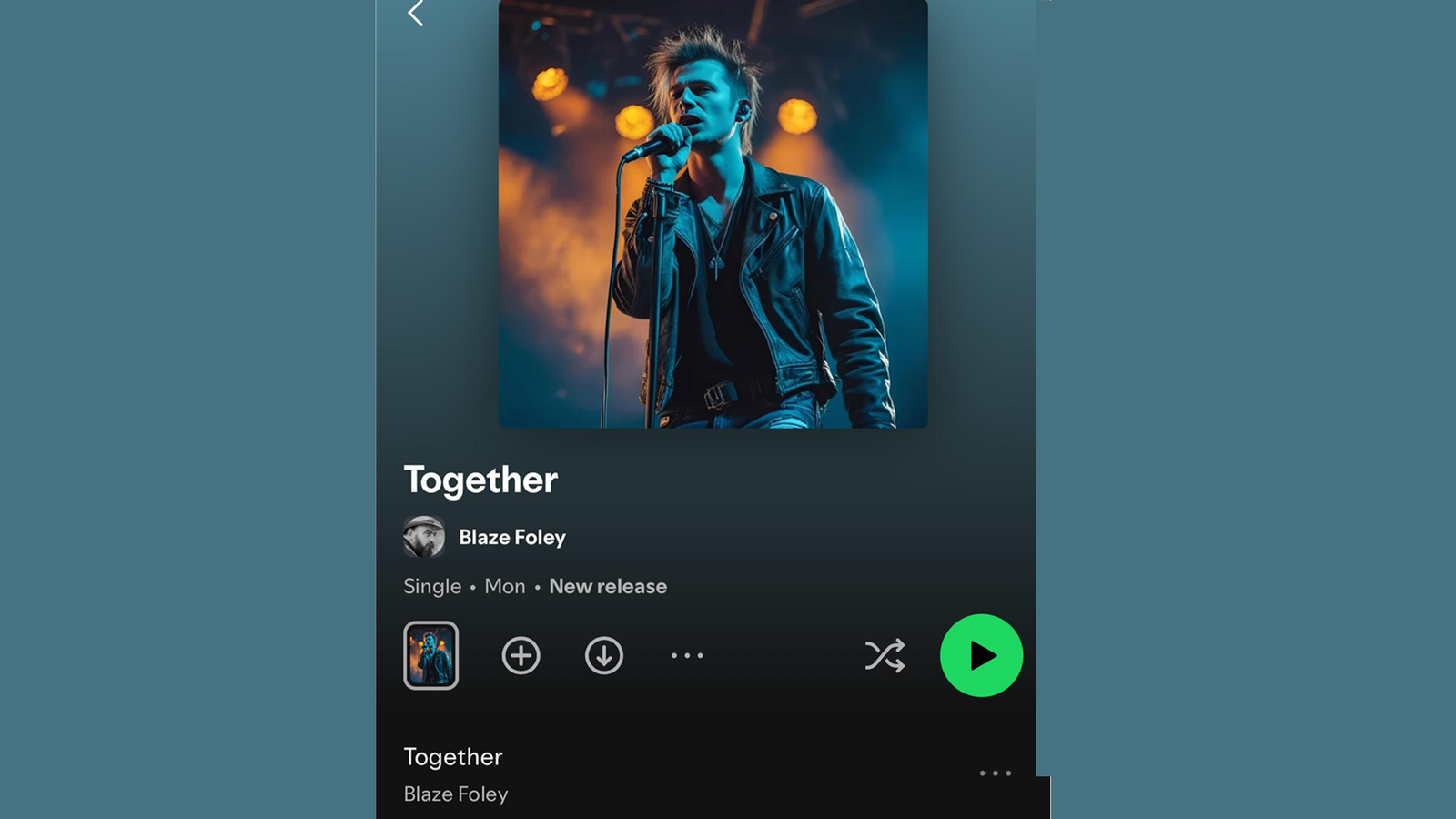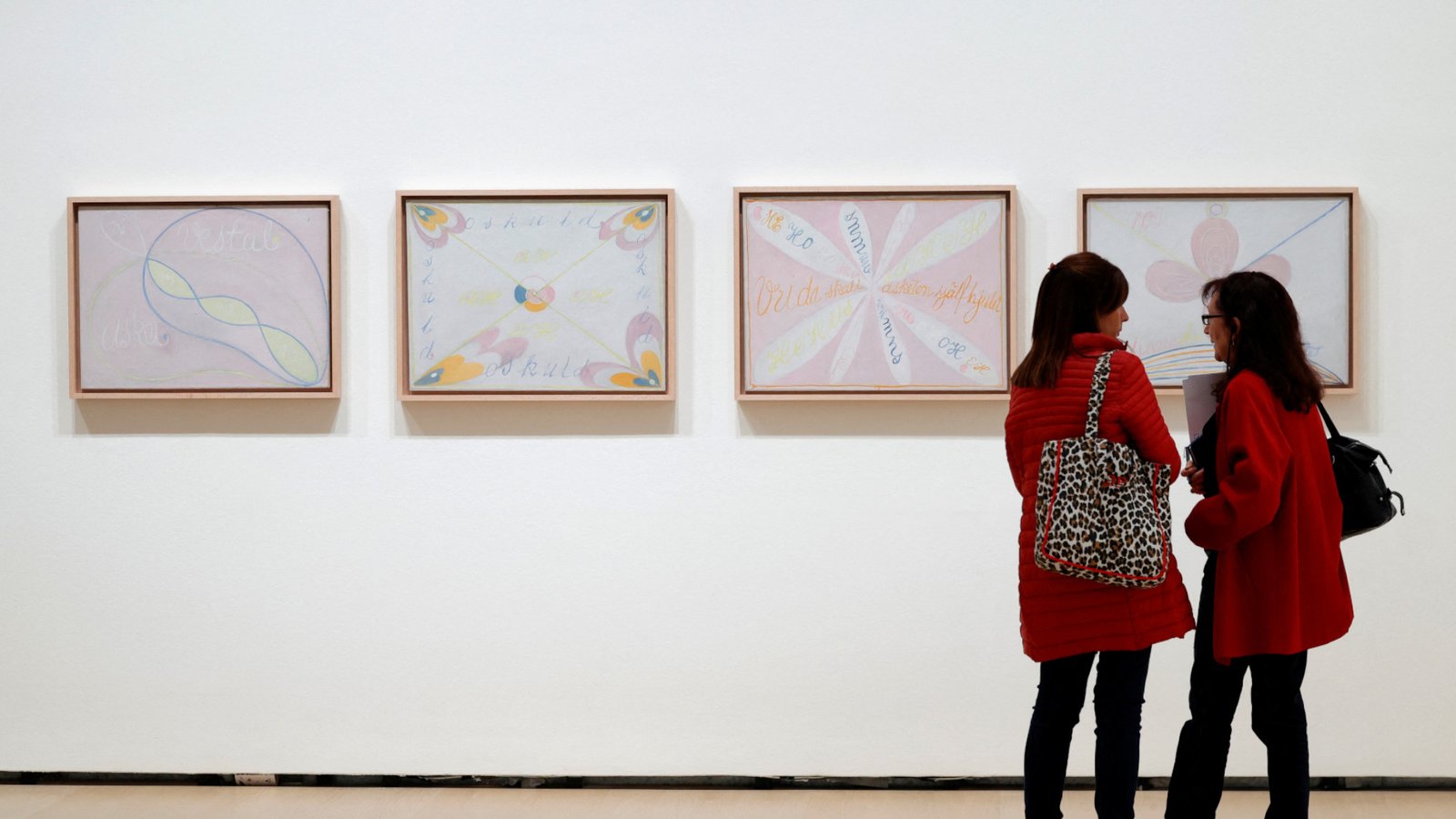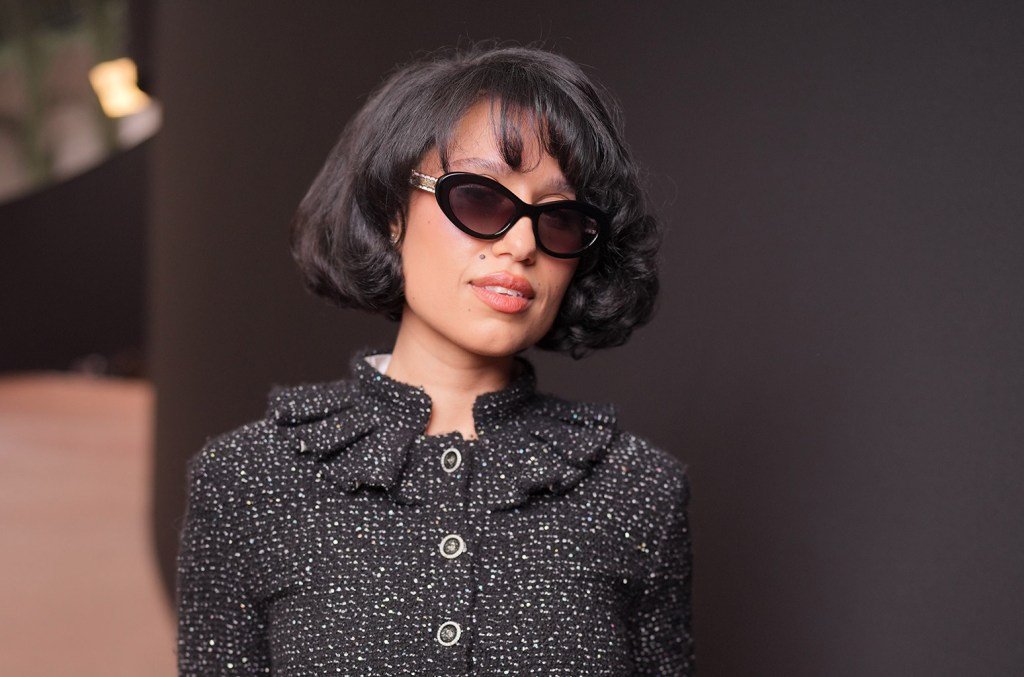Famed Indigenous artist Norval Morrisseau was browsing a Vancouver gallery with his longtime friend Cory Dingle around 1993 when a painting stopped them in their tracks.
The pair asked who created it.
The answer? Norval Morrisseau.
The trouble? The artist had never seen the work, let alone painted it.
We had a little chuckle and we left,
Dingle recalled. Then, I said, ‘What do you want to do about this?’ He said, ‘You know, you can’t police the world.’
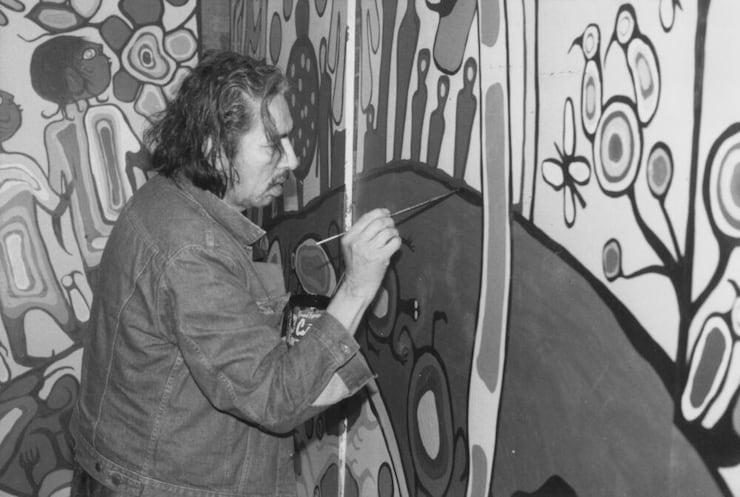
Norval Morrisseau is pictured painting for an exhibition in Saint-Paul-de-Vence, France, in September 1969. The groundbreaking artist’s estate has had to deal with an avalanche of fakes in recent years.
Photo: Centre d’art autochtone des Relations Couronne-Autochtones et Affaires du Nord du Canada
Morrisseau, who died in 2007, was a self-taught, trailblazing artist known for his pictographic style. One of a well-known group of seven First Nations and Native American artists, Morrisseau, who was Anishinaabe from Bingwi Neyaashi Anishinaabek First Nation, was the first Indigenous artist to have his work shown in a contemporary gallery in Canada. His paintings now sell for millions.
But the incident Dingle remembers proved to be an omen.
At least 6,000 fake paintings have since been uncovered, costing Morrisseau’s estate $100 million in losses. The phenomenon amounts to what police have called the biggest art fraud in world history.
WATCH | Morrisseau estate considering incorporating elsewhere:
Finding fakes is time consuming work. It requires co-operation from galleries and private collectors, a trained, critical eye cast on anything purporting to be made by the late artist and the patience to keep pursuing justice through the court system.
But now a new tool has emerged to help the battle: artificial intelligence.
Bogged down by the enormity of the task at hand, Morrisseau’s estate, which is run by Dingle, partnered with two art-loving professors to build software nicknamed Norval AI
about three years ago. It can analyze art pieces and determine the probability that they’re a genuine Morrisseau.
Because the fakes were so terrible … we got to a point with our AI that it was so good at picking them out,
Dingle said. There was no problem.
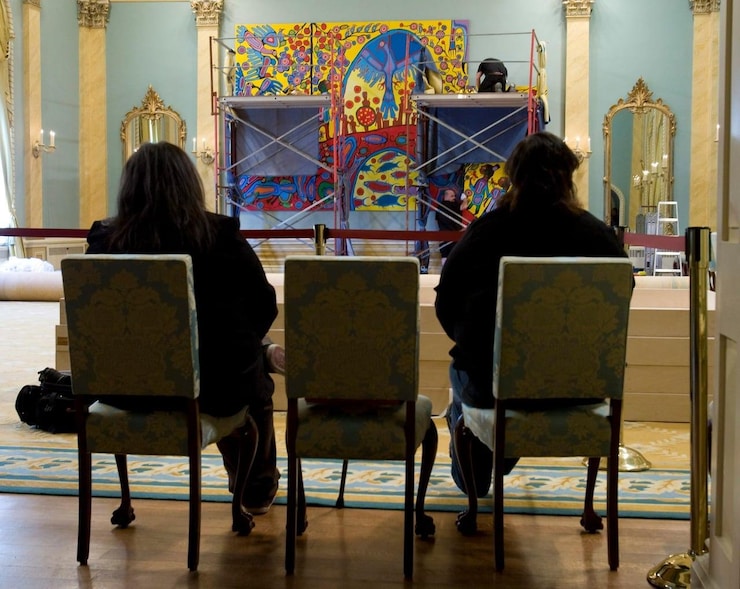
The daughters of Canadian Indigenous artist Norval Morrisseau, Lisa Morrisseau Meekis, left, and Victoria Morrisseau Kakegamic watch as the painting Androgyny is installed in the ballroom at Rideau Hall on Sept. 18, 2008, in Ottawa. Hundreds of forged artworks were falsely attributed to the Anishinaabe artist starting in 2002.
Photo: The Canadian Press / Adrian Wyld
Yet the estate knew fakes were still out there. They were just getting harder to detect because court hearings were revealing the tell-tale signs of a fake Morrisseau — thinner paint lines, for example — which allowed fraudsters to make their works even more convincing.
Enter Chloë Ryan.
The then-engineering student loved making large-scale abstract paintings.
Even though such works could sell for a decent amount, they often take weeks or months to create, narrowing the odds that she could make artistry a viable career.
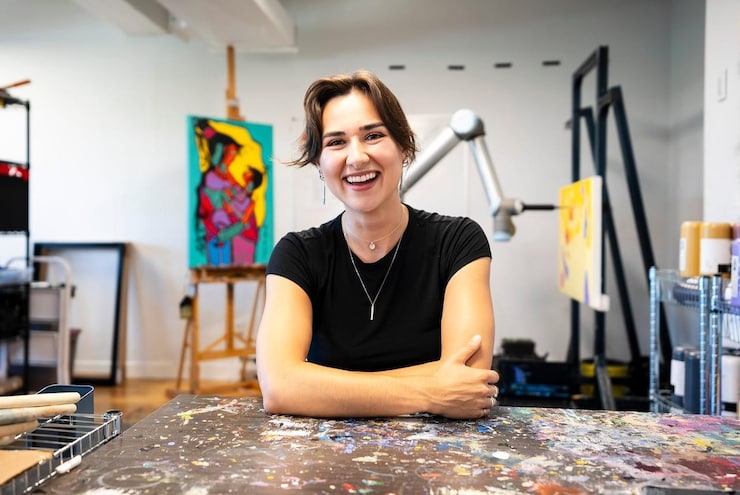
Ryan loved to create large-scale abstract paintings, but those often took months to produce.
Photo: The Canadian Press / Christopher Katsarov
She could make prints of her pieces, but they just weren’t the same because they lacked the texture of a real painting.
The conundrum became a source of inspiration for Ryan, leading her to start tinkering with robots and paint on her Montreal balcony.
She eventually developed Acrylic Robotics, a company that uses technology to paint pieces at the behest of an artist.
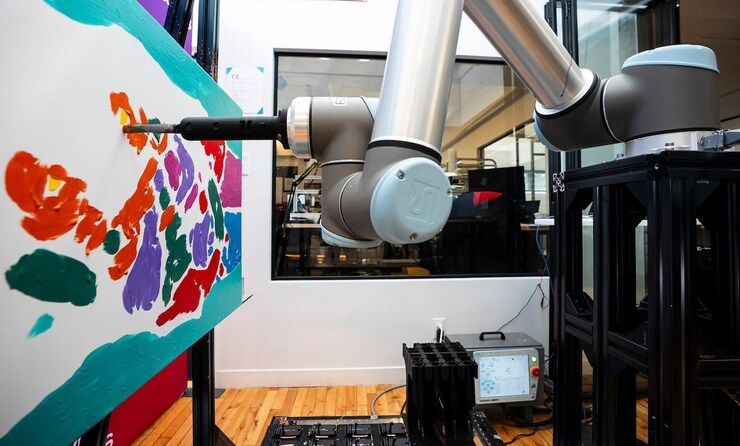
A robot trained on artificial intelligence paints a copy of Norval Morrisseau’s In Honour of Mother at Acrylic Robotics’ studio.
Photo: The Canadian Press / Christopher Katsarov
The process starts with an artist painting with a stylus on a drawing table, which acts like a massive tablet.
Amazon Web Services software analyzes and logs every movement, detecting millions of details in the piece, including the strokes, brush pressure, pigment and speed.
We like to think of AI as a powerful magnifying glass,
said Patricia Nielsen, AWS Canada’s head of digital transformation and AI.
It can detect those patterns and the anomalies that might be invisible to the human eye … so art experts, historians, can dig in further.
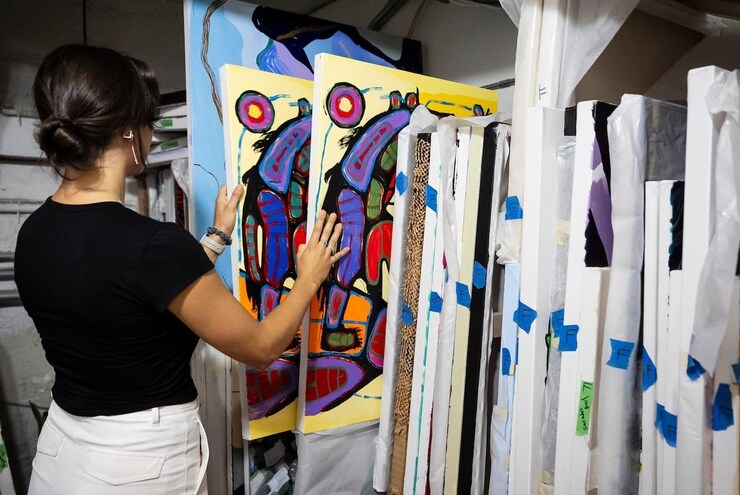
Ryan poses for a photograph next to several copies of Norval Morrisseau paintings made by a robot trained on artificial intelligence. She partnered with Morrisseau’s estate as they looked to detect fraud.
Photo: The Canadian Press / Christopher Katsarov
With that data, Acrylic’s robotic arm can then paint a replica so precise, Ryan says it’s indistinguishable from an original — exactly what Dingle needed to put Norval AI to the test.
A mutual connection put him in touch with Ryan last August. Shortly after, they got to work.
Because Morrisseau isn’t alive to paint images on Ryan’s tablet, Acrylic’s robot (Dingle affectionately calls it Dodo) had a more complicated feat to accomplish.
Dingle would send Ryan a hi-resolution image of one of Morrisseau’s works. Acrylic Robotics would then have an artist learn about eccentricities of his style and paint the piece before Acrylic’s robot would give it a try.
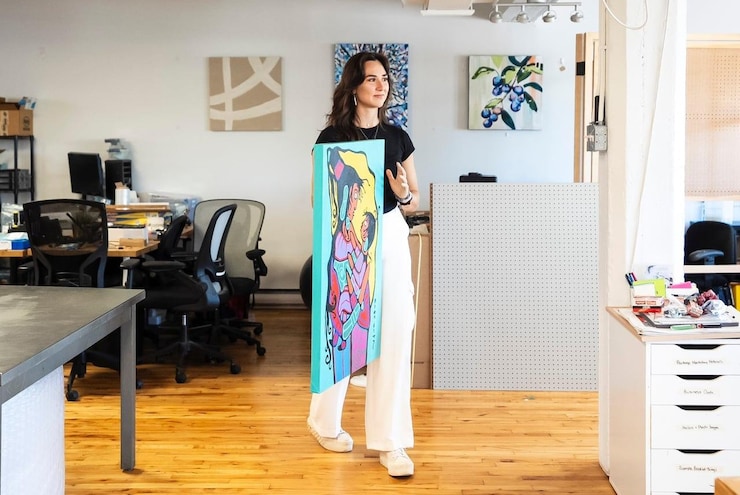
Ryan says she’s concerned that her technology could be used against artists.
Photo: The Canadian Press / Christopher Katsarov
Everything the robot painted was analyzed by the estate and Norval AI. The two sides have been going back and forth for about a year, picking out errors in the robot’s execution and poring over new works.
Early editions had several spots where both the estate and Norval AI could tell the robot had stopped a long stroke to pick up more paint — something uncharacteristic of Morrisseau.
If you look at one of our works randomly on the street, you wouldn’t be able to say that’s made by a robot, but we can’t yet do all art under the sun because there’s a lot of techniques that we haven’t yet built in,
Ryan said.
We can’t use every tool in an artist’s arsenal yet. If an artist is out here finger painting, obviously we can’t do stuff like that.
Concerns of harming artists
Newer editions of the Morrisseaus are about 69 per cent accurate and expected to improve even more.
But Dingle admits, I have kind of been holding back on getting to 100 per cent.
He’s scared of developing anything too perfect before he and Acrylic Robotics have found a foolproof method for ensuring a Morrisseau recreation can’t be passed off as the real thing.
It’s a concern Ryan shares.
The worst thing that could happen is that we release this without consultation with groups that have been harmed by art forgery and this technology is used against artists,
she said.
WATCH | Winnipeg Art Gallery painting part of Morrisseau fake investigation:
They’re currently exploring markings or other features that can be embedded in pieces to denote they’re not originals.
Once they settle on an ideal method, they’ll have an avenue to disseminate recreations of Morrisseau’s work — responsibly.
While some might think that’s the last thing an estate plagued by forgeries would want to do, Dingle sees it as a way to bring Morrisseau’s work to the people who would value it most.
There’s two schools named after Norval. There are healing institutions. There are academic institutions. There are remote Indigenous communities,
said Dingle, sitting in front of a rarely-shown Morrisseau.
They could never afford to buy this painting, to hang it in their halls, to have the healing and the lessons of it, so we need to be able to produce high level reproductions that bring the life of that painting to these places.
Tara Deschamps (new window) · The Canadian Press
